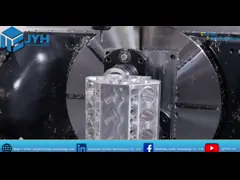ABS (acrylonitrile butadiene styrene) High-strength general-purpose engineering plastic, used for many
commercial products.
|
ASA (acrylonitrile styrene acrylate)
A material very similar to ABS with higher resistance to fading and
better suited for outdoor use.
|
CA (cellulose acetate) Typically used in eyeglasses and film, CA is a flexible clear
material that can be used in food contact.
|
CA (cellulose acetate) Typically used in eyeglasses and film, CA is a flexible clear
material that can be used in food contact.
|
LCP (liquid crystal polymer)
LCP has mechanics even at elevated temperatures as well as low
dielectric constants. LCP is popular for electrical connectors and
interconnects as well as medical devices. |
LDPE (low-density polyethylene)
A flexible and tough material with lower density versus HDPE. LDPE
does not react to acids, bases, or alcohols. Useful for trays, snap
lids,and general-purpose containers. |
PA 6 (polyamide 6, nylon 6)
Offers increased mechanical strength, rigidity, good stability
under heat, and/or chemical resistance.
|
PA 6/6 (polyamide 6/6, nylon 6/6) Offers increased mechanical strength, rigidity, good stability
under heat, and/or chemical resistance.
|
PARA (polyarylamide) Often combined with infills such as glass or mineral fibers, PARA
creates rigid parts with low creep and a slower rate of water
absorption than nylon (PA). |
PBT (polybutylene terephthalate, Valox)
A common electronic insulator with a polyester base. Highly used in
automotive as a longer-wear alternative to nylon. |
PBT-PET (polybutylene terephthalate-polyethylene terephthalate)
A compounded blend of PBT and PET.
|
PC (polycarbonate) A clear or colored, lightweight, glass-like plastic that is heavily
used across multiple industries. PC is impact resistant, holds
great feature detail, and can be used for safety equipment,
electronic devices. |
PC-ABS (polycarbonate-acrylonitrile butadiene styrene) The best of both PC and ABS. Higher-strength engineering
thermoplastic with slightly more flexibility than standard
polycarbonate. |
PC-PBT (polycarbonate-polybutylene terephthalate, Xenoy)
A tough and rigid material resistant to lubricants, solvents, and
cleaning agents. Very common in electronic enclosures. |
PC-PET (polycarbonate-polyethylene terephthalate) A blend of PC and PET provides tough and chemically resistant
results and can be used as an alternate to PC-ABS.It endures harsh
solvents and cleaners, making it excellent for sports equipment. |
PCT (polycyclohexylenedimethylene terephthalate)
A thermoplastic polyester that typically outperforms PET due to
lower moisture absorption and better environmental stability.PCT is
often used for connectors and switches. |
PE (polyethylene)
One of the most common plastics used in the world, PE has high
ductility, abrasion resistance, and chemical resistance.PE is often
described by its molecular weight,also is used in packaging,
tubing. |
PEEK
Offering excellent tensile strength that surpasses most plastics,
PEEK is often used as a lightweight substitute for metal parts in
high-temperature, high-stress applications. PEEK resists chemicals,
wear. |
PEI (polyetherimide, Ultem Known best for its extremely high heat and flame resistance, PEI is
used for many medical applications and is more affordable than
PEEK. |
PE-PP (polyethylene-polypropylene) A resin blend of the polyolefin’s polypropylene and polyethylene.
|
PE-PS (polyethylene-polystyrene) A resin blend of the polyethylene and polystyrene.
|
PES (polyethersulfone) A rigid, transparent plastic that is chemically inert,
biocompatible, and sterilizable. PES is suitable for food-contact
devices such as coffee machine components as well as aerospace and
automotive. |
PET (polyethylene terephthalate, Rynite) Also abbreviated PETE, this is a clear, strong, and lightweight PE
resin heavily used in food packaging, soda bottles, jars, andmore.
The material is food-safe. PET is recyclable with a resin code of
1. |
PLA (polylactic acid) A biodegradable and renewable plastic. PLA has a relatively low
glass transition temperature and is common in short-use
applications. |
PMMA (polymethyl methacrylate, acrylic)
A clear glass-like plastic. Good wear and tear properties. Great
for outdoor use.
|
POM (acetal polyoxymethylene, Delrin)
Good moisture resistance, high wear-resistance, and low friction.
|
PP (polypropylene) Polypropylene has excellent electrical properties and little or no
moisture absorption. It carries light loads for a long period in
varying temperatures. It can be molded into parts requiring
chemical. |
PPA (polyphthalamide)
A subset of nylons (polyamide) that typically exhibit a higher
melting point and lower moisture absorption. PPA is typically used
in automotive and industrial applications. |
PPS (polyphenylene sulfide, Ryton)
A high-performance thermoplastic with extreme resistance to
solvents. PS (polystyrene): A clear, hard, and brittle material widely used
for food packaging, clamshell containers. |
PS-PPE (polystyrene-polyphenyl ethers, Noryl) Exhibiting high heat and flame resistance, PPE-PS has high
stiffness and tensile strength even at elevated temperatures. |
PSU (polysulfone, Udel)
A rigid, stiff, and transparent plastic which is a
higher-performance alternative to polycarbonate.
|
PVC (polyvinyl chloride (Shore D)
A rigid, general-use plastic that is common in plumbing, non-food
packaging, and trimming.
|
PVDF (polyvinylidene fluoride, Kynar)
A chemically inert, high-temperature material. Due to its low
friction, PVDF is used in plumbing parts, bearings, chemical
handling,electrical wire insulation, and tubing. |
SAN (styrene acrylonitrile)
A polystyrene that is heat resistant and transparent. Due to its
relationship with polystyrene, SAN is low cost and has enhanced
clarity and shine. SAN is common in household goods, door handles. |
TPU (thermoplastic polyurethane (Shore D)
A tough, highly abrasion-resistant resin that bridges the gap
between rubbers and plastics. TPUs can be formulated to be rigid or
elastomeric. TPU exhibits a high flex before break and is ideal for
wheels. |
Other material can be customized.
|



